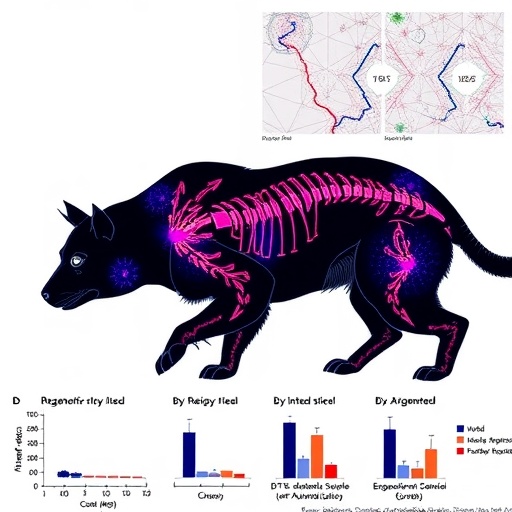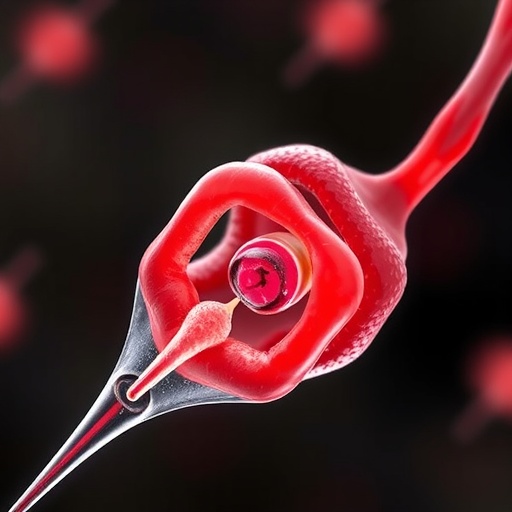In a groundbreaking study that sheds new light on the complex mechanisms governing adipocyte differentiation, researchers have unveiled a pivotal role for the transcription factor IRX3 in orchestrating a SUMOylation-dependent switch within adipocyte precursor cells. This discovery, published recently in Nature Communications, offers profound insights into the molecular dance that orchestrates the fate of fat cells and opens new avenues for therapeutic intervention in metabolic disorders such as obesity and type 2 diabetes.
IRX3 has been a molecule of interest following genome-wide association studies linking its locus to body mass index and obesity. However, the precise mechanisms by which IRX3 modulates adipocyte behavior remained elusive until now. Through a series of meticulous experiments, the research team demonstrated that IRX3 exerts its influence through a biochemical modification known as SUMOylation—a post-translational process involving the attachment of Small Ubiquitin-like Modifier (SUMO) proteins to target proteins, altering their function, localization, or interaction capabilities.
.adsslot_nRjBh2xugE{ width:728px !important; height:90px !important; }
@media (max-width:1199px) { .adsslot_nRjBh2xugE{ width:468px !important; height:60px !important; } }
@media (max-width:767px) { .adsslot_nRjBh2xugE{ width:320px !important; height:50px !important; } }
ADVERTISEMENT
The pivotal discovery was that IRX3’s activity as a transcriptional regulator in adipocyte precursor cells is modulated by its SUMOylation status. This modification acts as a molecular switch that determines whether precursor cells commit to differentiation or maintain a progenitor state. By manipulating the SUMOylation of IRX3, the researchers could effectively tilt the balance between these cellular states, illuminating a refined control mechanism underpinning adipose tissue remodeling.
Delving deeper into the mechanistic framework, Bjune and colleagues employed advanced molecular biology techniques, including chromatin immunoprecipitation sequencing (ChIP-seq), to identify the genomic loci targeted by IRX3 in both its SUMOylated and non-SUMOylated forms. The data revealed distinct binding patterns and transcriptional programs depending on IRX3’s modification state, underscoring the functional versatility endowed by SUMO attachment. This bifurcation of gene regulation reflects a sophisticated layer of adipocyte precursor cell fate determination.
Notably, the SUMOylation-dependent switch governed by IRX3 operates in concert with key signaling pathways and epigenetic modifiers known to influence adipogenesis. For instance, the interplay between IRX3 and the transcriptional co-repressor complexes was found to be SUMOylation-sensitive, affecting chromatin accessibility and downstream gene expression. Such findings elevate our understanding of how intracellular signaling and chromatin dynamics integrate at the level of single transcription factors to modulate cell differentiation.
The implications of this study extend beyond basic cell biology, touching upon pathological states associated with aberrant adipocyte function. Excessive accumulation of white adipose tissue contributes to insulin resistance and chronic inflammation, hallmarks of metabolic syndrome. By pinpointing IRX3’s SUMOylation as a molecular lever that controls adipocyte precursor fate, the research offers a new target for potential pharmacological manipulation. Modulating IRX3 modification states could promote healthier adipose tissue composition, favoring energy expenditure over storage.
Furthermore, the research provides a plausible explanation for the heterogeneous responses to metabolic challenges observed among individuals. Genetic variations affecting IRX3 expression or SUMOylation machinery might underlie differential predispositions to obesity, offering a genetic and molecular basis for personalized medicine approaches. This nuance enriches the landscape of metabolic disease research, guiding future exploration into targeted gene regulation therapies.
The study’s experimental design included cutting-edge in vitro differentiation models and in vivo mouse models with engineered mutations that either mimic constitutive SUMOylation or prevent it on IRX3. These models demonstrated phenotypic outcomes consistent with the hypothesized role of SUMOylation in adipocyte differentiation, including altered fat depot sizes, metabolic rates, and glucose homeostasis. Such integrative approaches fortify the translational relevance of the findings and validate the model of IRX3 as a master regulator whose activity is dynamically sculpted by post-translational modification.
The study also raises provocative questions about the broader role of post-translational modifications in metabolic regulation. SUMOylation, often overshadowed by ubiquitination, phosphorylation, or acetylation, assumes a pivotal position in this context. By demonstrating that such modifications can decisively govern key transcriptional regulators like IRX3, the research invites a reevaluation of SUMOylation’s contribution to adipose tissue biology and beyond.
Moreover, these findings prompt renewed scrutiny into the pathophysiology of metabolic diseases, where disrupted SUMOylation patterns or IRX3 dysfunction may precipitate maladaptive adipose tissue remodeling. Future research inspired by this study may uncover novel biomarkers indicative of metabolic health or disease progression, grounded in the post-translational landscape of adipocyte regulators.
From a therapeutic perspective, small molecules or biologics designed to modulate IRX3 SUMOylation could represent a next-generation class of metabolic interventions. Targeted enhancement or inhibition of this modification has the potential to recalibrate adipose tissue homeostasis, promoting beneficial phenotypic outcomes without overt systemic disruption. As drug discovery efforts pivot towards precision modulation of gene regulatory networks, IRX3’s SUMOylation switch stands out as an attractive candidate.
Beyond adipose tissue, the principles elucidated by this study might have implications for other stem and progenitor cell populations, where SUMOylation-dependent transcriptional switches could similarly dictate cell fate decisions. Thus, the impact of this research may transcend metabolism, influencing broader fields such as developmental biology, regenerative medicine, and cancer biology.
In summary, the compelling narrative presented by Bjune et al. showcases the intricate molecular choreography by which IRX3 governs adipocyte precursor differentiation through SUMOylation-dependent switching mechanisms. This elegant interplay of transcription factor modification, chromatin remodeling, and metabolic signaling outlines a paradigm shift in our understanding of adipose tissue plasticity and its role in health and disease. As the global burden of metabolic disorders continues to escalate, insights like these are invaluable in guiding innovative therapeutic strategies tailored to manipulate cellular identity at its molecular roots.
Subject of Research: The regulation of adipocyte precursor cell differentiation by the transcription factor IRX3 via SUMOylation-dependent mechanisms.
Article Title: IRX3 controls a SUMOylation-dependent differentiation switch in adipocyte precursor cells.
Article References:
Bjune, JI., Laber, S., Lawrence-Archer, L. et al. IRX3 controls a SUMOylation-dependent differentiation switch in adipocyte precursor cells. Nat Commun 16, 7248 (2025). https://doi.org/10.1038/s41467-025-62361-1
Image Credits: AI Generated
Tags: adipocyte precursor cell fateadipose tissue as an endocrine organenergy storage vs. energy dissipation in adipose tissuegenome-wide association studies on obesityIRX3 role in adipocyte differentiationmetabolic disorders and fat cellsmolecular mechanisms of fat cell developmentobesity and type 2 diabetes researchregulation of adipocyte precursor differentiationSUMOylation switch in fat cellstherapeutic interventions for obesitytranscription factors in metabolic regulation





